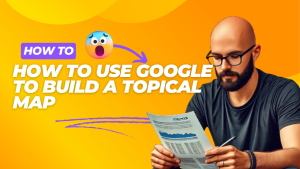If you care about where SEO is headed, Glen Allsopp’s latest research is essential reading.
His 2025 State of SEO report at Detailed.com is packed with real data, sharp insights, and trends every SEO needs to know. I’ve pulled together a series of quick summaries from the full piece below, but I highly recommend reading the original report for the full context and takeaways:
🔗 https://detailed.com/state-of-seo/
Full credit to Glen for the work that went into this.
Across 490 sites owned by Digital Goliaths, just 18% show search traffic increases year over year
Across 490 sites owned by major media conglomerates (“Digital Goliaths” like Hearst, Vox, Condé Nast, and others), only 18% saw year-over-year search traffic increases when comparing April 2025 to April 2024.
While some sites like Simply Recipes, Serious Eats, and Bicycling.com saw growth, prominent brands such as WebMD, Eater, Country Living, and Avvo experienced traffic declines.
Although SEO tools don’t capture traffic from sources like Google Discover, the widespread downturn in organic traffic raises serious concerns about the long-term visibility of large content sites in search results.
Goliath brands dominate most industries and site types
As of May 2025, Digital Goliaths and public companies dominate Google’s search results across nearly all industries and verticals. An analysis of search terms with over 100 million combined monthly searches shows that 80% of top-ranking sites are owned by these large entities.
While this trend may be rooted in Google’s desire to avoid surfacing risky or untrustworthy content, it has also led to big brands ranking for topics outside their core expertise, simply because their domain carries more authority.
This growing dominance raises concerns about fairness, topical relevance, and the decreasing visibility of independent publishers in organic search.
Wikipedia’s traffic has been stable over the past ten years
Despite massive changes in the search landscape, Wikipedia’s traffic has remained relatively stable over the past 10 years.
While tools like Similarweb estimate that 85% of its traffic comes from organic search, and SEMrush estimates 2.3 billion monthly Google clicks, Wikipedia has not experienced the steep declines seen by many large content publishers.
Its open analytics confirm consistent performance, making Wikipedia an outlier in an era where even top-tier sites are losing visibility.
A study of 35,000 websites found search drives 43.8% of their traffic and just 0.1% for LLMs
A March 2025 study by Ahrefs analyzing 35,000 websites found that organic search drives 43.8% of all website traffic, with Google accounting for nearly all of it. In contrast, traffic from large language models (LLMs) like ChatGPT made up just 0.1%.
While the dataset may be skewed toward search-focused sites, and some AI-related traffic may go unattributed, the findings reinforce that search remains by far the dominant traffic channel, even as AI tools gain popularity.
Google isn’t going away
As of January 2025, Google now processes over 5 trillion searches per year, more than doubling the 2 trillion figure last shared in 2016.
Google later confirmed in May 2025 that overall query volume is still growing, including increased search activity from Apple devices and platforms.
While some critics suggest Google’s numbers may include inflated query types (e.g. search results that trigger more searches), the data still underscores Google’s unmatched dominance in global search traffic.
Forums may be getting eaten up by AI Overviews
88 out of 100 forums owned by VerticalScope have seen year-over-year search traffic declines, according to third-party data.
This marks a reversal from the 2023–2024 trend, when forums benefited from Google surfacing more community-driven content in search results. Now, traffic for many forums has returned to pre-surge levels, with notable drops on sites like MTBR.com and ArcheryTalk.com.
VerticalScope itself confirmed an 8% year-over-year traffic decline, attributing the shift to Google prioritizing AI Overviews and YouTube in search results.
This change could signal improving visibility for traditional content sites that previously lost rankings to forums.
Google has a clear incentive to make search good enough to come back to
Despite concerns about AI disrupting search quality and harming publishers, Google has a strong financial incentive to keep search “good enough” for users to return.
With over half of its revenue tied to Search, Google depends on maintaining user engagement to sustain its ad business. While AI integration has raised alarms about fairness and visibility, Google can’t afford to degrade the search experience so much that users leave.
The takeaway: Google may test limits, but it must ultimately protect the long-term viability of its search product to preserve its core business model.
Ads are coming to AI search LLMs
AI search competitors like Perplexity are beginning to introduce ads, which could make them slightly less appealing than before.
As of March 2025, Perplexity had fewer than a dozen advertisers but expects that number to grow. This shift signals that even AI-driven platforms will need ad revenue to sustain growth, potentially losing the clean, ad-free experience that initially set them apart from traditional search engines like Google.
While ads likely won’t stop users from adopting these tools, they do erode one of their key early advantages.
Google is pushing the boundaries of long-standing norms with publishers, prioritizing its own ecosystem over fair content attribution and referral traffic
Google is increasingly seen as disregarding fairness toward content creators, prioritizing its own products over sending traffic back to websites.
By extracting content to power AI Overviews without sufficient attribution or traffic return, Google appears to be rewriting the long-standing, informal agreement between search engines and publishers — one where visibility was exchanged for content access.
Despite public claims of supporting the open web, Google’s actions suggest a growing focus on becoming the end destination, often at the expense of the very content creators it depends on.
AI Overviews are reducing clicks to organic listings
AI Overviews in Google search results are significantly reducing clicks to organic listings.
Multiple studies confirm the trend:
- Similarweb: 20% fewer clicks
- Ahrefs: 34.5% drop in click-throughs
- Amsive: 19.98% CTR decline
- Seer Interactive: Organic CTR hits an all-time low when AI Overviews are present
While Google emphasizes positive user feedback, the data consistently shows that AI Overviews cannibalize organic traffic, making them a major concern for publishers and SEOs alike.
Many content sites have all but disappeared from SERPs
Despite assurances from Google that impacted sites had “nothing to improve,” many content-focused websites have effectively vanished from search results following updates like the Helpful Content update.
Public examples include Housefresh, Retro Dodo, and Travel Lemming, all of which experienced major traffic drops. While Google even held an in-person event with some affected publishers, recoveries have been minimal, and confidence in the future of independent blogs and resource sites in search is at an all-time low.
Finding link sources is going to continue to become more and more difficult
“Linkerati” is a term coined by Rand Fishkin to describe individuals with the power to create outbound links—such as site owners, content editors, freelance writers, and forum contributors.
As content sites struggle to survive and receive less traffic from search engines, the pool of people who actively link to other websites—the “Linkerati”—is likely shrinking rapidly.
With the content publishing model under pressure, fewer site owners, writers, and editors are in positions to link out, making link building harder than ever, especially for smaller or newer sites.
This shift benefits large brands that already have strong backlink profiles, while further challenging independents. Unless Google significantly reduces its reliance on backlinks, the decline of the Linkerati may deepen SEO inequality.
AI Overviews are becoming increasingly present atop search results
AI Overviews are becoming increasingly common in Google search results, with a March 2025 Semrush report showing they appeared in 13.14% of all U.S. desktop queries—nearly double the rate from February.
Multiple studies confirm this trend, raising concerns not just about their growing visibility, but also about their impact on organic click-through rates, which continue to decline when AI Overviews are present.
Google Discover coming to Desktop
Google Discover is rolling out to desktop, starting in May 2025, and it could become a major new traffic source for content sites.
For many publishers, Discover already drives more traffic than traditional search on mobile. Expanding it to desktop—where users often browse longer and engage more deeply—has the potential to significantly boost visibility and clicks for high-quality content.



